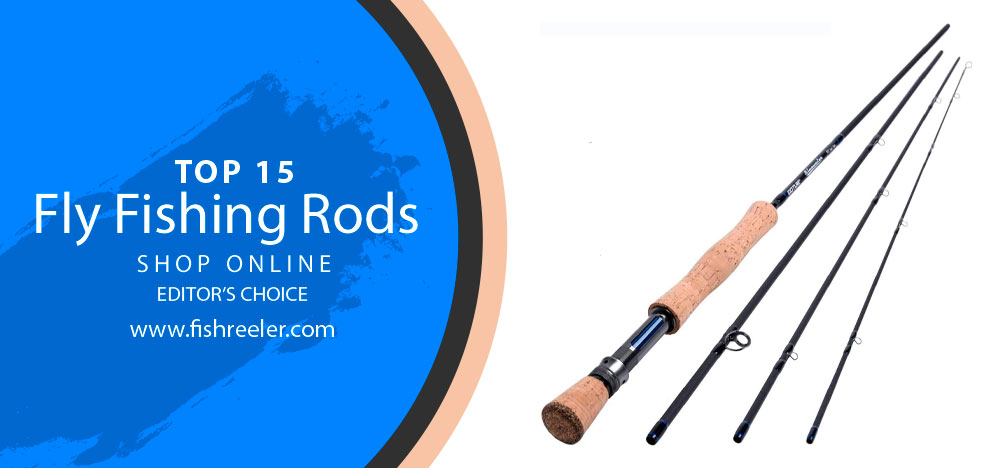
Casting Champions: Your Guide to the Best Fly Fishing Rods
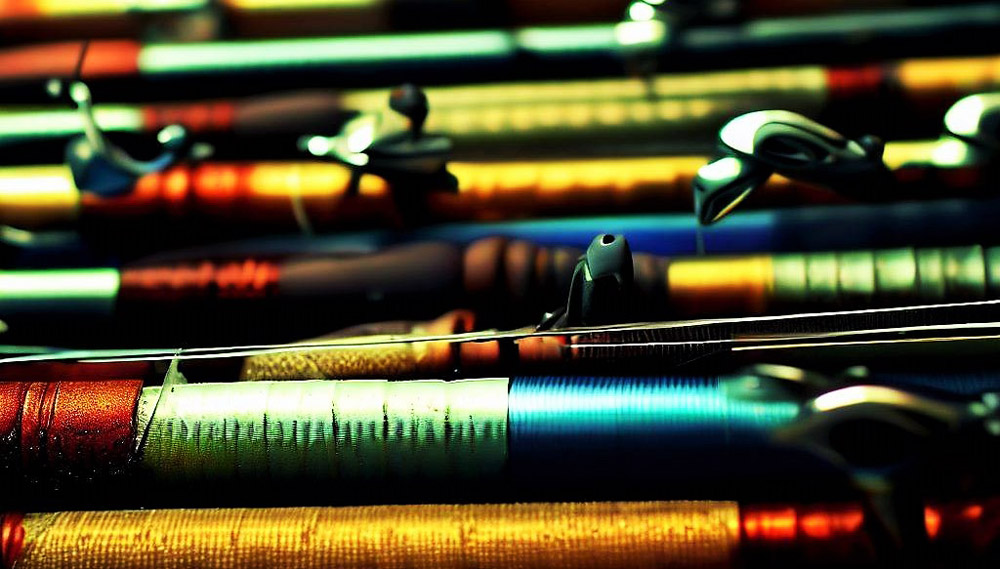
As the morning fog lifts off the water, you find yourself in a serene wilderness with the rhythmic lullaby of a flowing river. The sun peeks over the horizon, casting golden rays onto the ripples. You can feel the cool water against your waders, and you can smell the scent of fresh earth and pine. You’re ready to start your day as you reach for your trusted fly rod. This is the exquisite world of fly fishing – a sport, an art, a meditation, and a connection with nature that draws thousands to riverbanks, creeks, and streams.
Yet, the tranquility of this scene can be interrupted, or disrupted by the wrong equipment. A rod that doesn’t balance correctly in your hand, or one that doesn’t have the strength to withstand the fight of a wild trout can turn a relaxing day into a frustrating one. The fly rod – your primary tool in this angling game – has a major influence on your success, comfort, and enjoyment. That’s why having the right fly rod is essential for a memorable and rewarding fly fishing experience.
There is a vast sea of choices when it comes to fly fishing rods. Selecting the best one can be as complex as tying the perfect fly. Each rod has its unique characteristics, from flexibility and strength to weight and length, all of which should align with your personal angling style, targeted species, and fishing location.
In this article, we dive deep into the waters of fly fishing gear, focusing on the ultimate tool every angler needs – the fly rod. We will explore the top-rated fly fishing rods currently in the market, dissecting their features, understanding their pros and cons, and aiding you in making the best choice for your fly fishing endeavors. So, whether you’re a seasoned angler looking to upgrade your gear or a novice deciding on your first fly rod, stay with us as we cast out into the world of the best fly fishing rods.
Mastering the Art of Fly Fishing: The Essential Gear
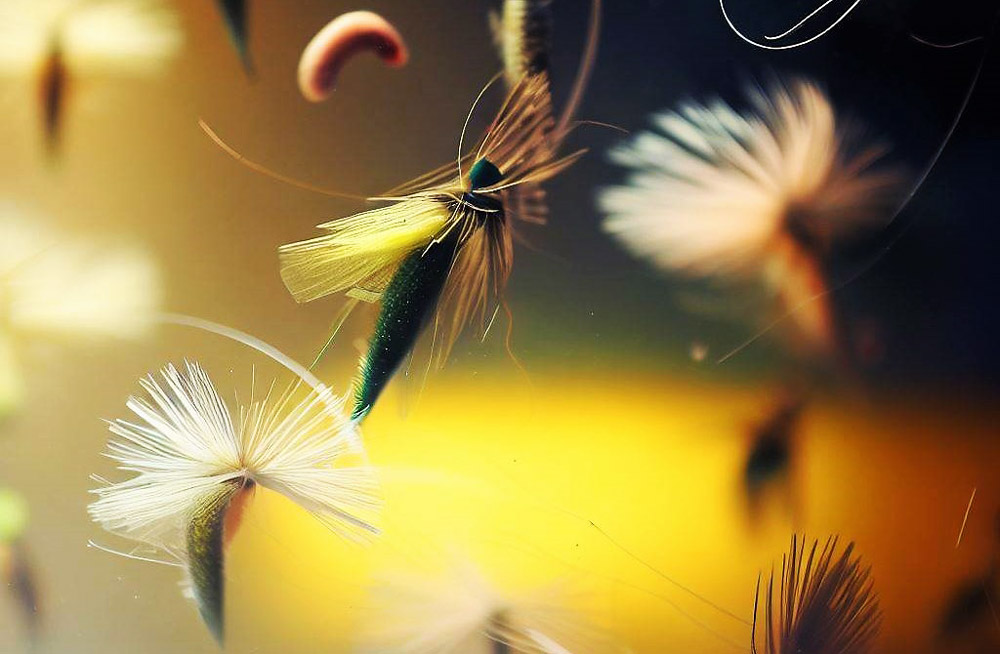
Fly fishing is as much about understanding your equipment as it is about developing your casting skills or knowing where the fish are biting. At the heart of this gear is the fly rod. Let’s break down this essential tool and get to grips with its anatomy, types, and historical evolution.
Understanding Your Fly Rod: Components and Their Functions
⭐A fly fishing rod, while appearing simple, is a marvel of design. Here are the main components:
| Rod Part | Description | Importance |
|---|---|---|
| Rod Blank | The main body of the rod, usually made from graphite, fiberglass, or bamboo | Its flexibility allows for the loading of the rod during the cast |
| Grip/Handle | Typically made from cork or EVA foam, where you hold the rod | The design and material affect your casting comfort and control |
| Reel Seat | The section where the reel is attached | It’s important to ensure that the reel seat securely holds the reel in place |
| Guides | Rings along the rod blank that control the line’s path during casting and retrieval | The number, size, and material can affect casting accuracy and distance |
| Tip Top | The final guide at the top of the rod | It’s instrumental for accurate casting and sensitivity to fish bites |
The Perfect Rod: Exploring Fly Rod Types and Features
⭐Fly fishing rods are not one-size-fits-all. They come in different types, each designed for specific fishing environments and techniques:
| Type of Rod | Characteristics | Ideal Usage |
|---|---|---|
| Freshwater Rods | Lighter, designed for casting smaller flies | Perfect for rivers, streams, and lakes, targeting species like trout and bass |
| Saltwater Rods | Heavier, stronger, and built to handle the corrosive nature of saltwater | Best suited for larger fish species like tarpon or bonefish |
| Spey Rods | Longer, designed for a two-handed casting technique | Ideal for large rivers and targeting big salmon or steelhead |
| Switch Rods | Versatile rods that allow both one-handed and two-handed casting | Suitable for a variety of fishing situations |
Moreover, a rod’s length, weight, and material greatly influence its performance:
| Rod Aspect | Characteristics | Ideal Usage |
|---|---|---|
| Length | Affects casting distance and control | Short rods (6-8 feet) are great for small streams, longer rods (8-14 feet) provide more distance and are ideal for larger rivers or lake fishing |
| Weight | Refers to the rod’s power and the line weight it can handle | Lighter rods (1-4 weight) are used for small fish, while heavier rods (5-12 weight) can handle larger fish |
| Material | Graphite rods are lightweight and stiff, fiberglass rods are durable and flexible, bamboo rods offer a traditional, smooth casting experience | Graphite rods are great for long casts; fiberglass rods are good for close-quarters fishing; bamboo rods, though expensive and less durable, offer a traditional, smooth casting experience |
A Historical Reel: The Evolution of Fly Fishing Rods
Fly fishing rods have a rich history, tracing back to the second century when rods were made of simple, long wooden poles. The evolution journey saw the introduction of split bamboo rods in the 19th century, known for their strength and flexibility. The 20th century brought fiberglass rods, providing durability and affordability. Today, most rods are made of graphite, delivering a combination of lightness, strength, and flexibility that meets the demands of modern fly fishing. The evolution of fly fishing rods is truly a testament to the continual pursuit of the perfect cast.
Our Top 15 Fly Fishing Rods to Elevate Your Angling Adventure
If you’re new to fly fishing, buying your first rod can be a daunting task. Fly fishing is the most ancient and traditional way of fishing. Therefore, today there are thousands of different rods on the market, and choosing the best one that suits your goals and objectives is a difficult task. But even if you’re a veteran of fly fishing, rod technology changes every year, and figuring out which rod is the best today is very difficult.
To help you choose the best fly rod for you, we’ve written this guide, which covers everything you need to know before buying a fly rod. We’ve also compiled 15 of the best rods available on the market today and reviewed them in detail. Stay tuned and find out which models perform best in fly fishing!
⭐Here are our top fly rod recommendations for successful fishing:
1# Wild Water Fly Fishing Rod – Top Combo Package
If you’re preoccupied with the task of not only buying a good fly rod but also a reel with tackles, then you won’t find better than this model. This kit includes a fly reel, 4-piece rod, case, line, line cutters, and a set of baits. Wild Waters is one of the top fly fishing rod manufacturers. This rod model combines affordability and high performance. Whether you are a beginner or a pro, this rod will handle the challenge for anglers of all backgrounds.
This 9ft model is versatile and suitable for anglers who primarily fish in freshwater areas such as perch or trout. The rods are made of graphite with a strong IM8 base. These rods tend to cast long distances with powerful hits, but they’re also quite easy to control. They’re more geared towards beginners, as experienced anglers often already have a reel and all the accessories they need.
2# Netangler Fly Fishing Rod & Reel Combo – Beginners Choice
Often, beginners have to choose not only a rod but also a reel, fishing line, lures, etc. This combo will solve your problem of choice, and you can immediately go to the pond. We’re introducing one of the easiest to use and simplest rods for beginners from NetAngler. A beginner angler needs to spend a lot of time learning how to cast. Right from the start, this rod allows you to cast tight loops even if you’re very poor at accurate casts.
Made of high modulus graphite, this rod is very strong and durable. We recommend you to use a moderate-fast tuning, as it is the most versatile. Another aspect that attracts novice anglers is its price. You get a very high quality and performance rod for a very low price. But the highlight of this model is that you get a complete set with a reel, a box of baits, a fishing line, scissors, and a carrying case. You don’t need to spend hours choosing a reel in the store, then picking a line for your combo. You just buy it and go fishing.
3# Moonshine Drifter Series Fly Fishing Rods – Top Performer
If you’re quite experienced in fishing and your goal is to get as much performance out of your rod as possible, then why not buy a rod that’s made for that? From an aesthetic point of view, Moonshine doesn’t look out of the ordinary, just a regular glossy rod with a cork grip and a reel seat. The whole secret lies in the structure of the blank. This rod has a tapered design, which causes the rod to bend more and more like the casting force increases. Fast and accurate casts are what this rod expects from you. In the right hands, this rod turns into a rod that casts equally well from 10 and 50 feet. Besides, the soft tip provides ample cushioning even for very light lures.
4# M Maximumcatch Extreme Graphite Fly Fishing Rod – Best Sensitive
Rod makers in specialty stores often raise the price of sensitive rods because they’re really good. But what if you want a sensitive rod as cheap as possible? We present to you the graphite rods from Maximumcatch. Despite its price tag, it works surprisingly well. Made from graphite, the rod curves very clearly and smoothly from handle to tip. Thanks to the high-quality tip and chrome-plated guides, the angler instantly feels even the weakest fish bites and can control the lure completely. A total of 12 different combinations and lengths of this model are available, ranging from 8’6″ to 10′. Many anglers, especially experienced anglers, find this model very attractive for its price.
5# Eagle Claw Pack-It Spin Fly Rod – Budget & High-Quality
Those anglers who have followed us for a long time know how good the Eagle Claw reels are. Well, they make rods just as well. The Pack-It Spin-Fly Rod is a great example of this because it not only performs well on the water but also has a proven manufacturer’s warranty. The lightweight 7.6 ft combo is great for fishing trout in small streams or rivers. The rod is made of durable fiberglass and comes in 4 pieces for easy portability. Finally, it features a sturdy EVA handle and smooth guiding lines. At such a low cost, it’s a big plus that the rod has such characteristics. Therefore, if you love it inexpensively and with high quality, then this is your choice.
6# Piscifun Sword Graphite Fly Fishing Rod 4-Piece 9’ Carbon Fiber – Very Reliable
Many rods will surprise you with their quality or casting distance. But among them, there aren’t many reliable and durable rods. So we present you with a Piscifun rod, one of the most reliable rods on the market. This rod is quite long – 9 feet, available in four weights. It has a slow to medium action, medium flexibility, and an IM7 graphite design.
The IM7 version of the action may not be as flexible and whipping as the IM8, which is used in most modern rods, but the previous version was colossal. This is why this rod is so reliable. It also includes an aluminum reel seat and chrome line guides. This rod was originally designed for small fish like trout, panfish, or perch, but even if you want to catch something a little larger, this blank will do just fine.
7# Wakeman Fly Fishing Starter Kit 8’ Fiberglass Rod & Reel – Best for Travel
If you’re going on a fishing trip to some remote place, then in addition to a lightweight rod, you will need a convenient case for carrying your tackle and fishing rod. In this category, Wakeman is one of the best solutions.
This model is one of the cheapest, but it still offers great performance for your money and you also get a reel and a bag. The powerful 8ft 3-piece rod will allow you to cast more accurately and will prevent most of your false casts that usually happen with shorter rods. It’s not the best long-range casting rod, but it’s great for those casting roughly 20 to 60 yards. It has everything to slay the energetic bass or other fast species.
8# Goture 4-Piece Graphite Fly Fishing Rod 9 Feet – The Most Compact
Since most of the best fishing spots take a long journey, many anglers need a compact rod that allows them to easily navigate with it. Fly rods of yesteryear rarely surprise you with their compactness, but modern rods such as the Goture allow you not to worry about the rod being too bulky or taking up too much space.
While this rod can be split into 4 separate pieces that will easily fit into any travel bag, it works just as well as most two-piece rods. Made from 30-ton graphite, it evenly distributes the load and allows you to cast with the precision you need in rivers and streams. This rod also features an aluminum reel seat, chrome guides, and an AA grade cork handle. Besides, the manufacturer gives a 20-year warranty, so you can be sure of the quality of the rod.
9# St Croix Mojo Bass Graphite Fly Fishing Rod – Premium Class
St Croix provides excellent rods for anglers who are willing to invest in the quality of their fishing. This 7’11” rod is great for bass or other heavy fish. The rods provide a very compact course, and the graphite construction of the SCII allows you to feel every movement of the fish and make the most accurate casts. And of course, like all St Croix rods, they come with a 5-year warranty so you can shop with confidence.
10# Orvis Clearwater Fly Fishing Rod – Best Rod You Can Buy
5-weight rods, unlike others, are among the most suitable for trout and panfish. If you’re looking for a rod just for this fish, we recommend Orvis Clearwater. The 5-weight Orvis rod is a great choice for these scenarios and is the company’s best model for freshwater. This 9-foot model is made up of 4 pieces and offers incredible casting precision, allowing you to accurately animate light lures.
11# Okuma SLV Graphite Fly Fishing Rod – Best Universal Fishing Rod
4-weight rods are generally considered the most versatile for freshwater anglers. Therefore, it’s better to choose a flexible rod that works well in a variety of conditions if you fish in deep waters with a variety of lures. Okuma offers you a medium-fast rod in various lengths that will allow you to accurately cast your lure wherever you want. The rod does an excellent job with both medium and long casts and works well with a variety of tackles.
12# Sougayilang Fly Fishing Rod & Reel Combo – Complete Starter Package
If you want a complete starter kit with a quality fly reel, we recommend looking at the Sougayilang kit. It contains an excellent CNC reel, four-piece extra-light rod, line, lures, and a bag. The rod is made of durable graphite, making it great for fishing larger freshwater fish such as largemouth bass or pike. This compact graphite rod set will help you get even the most fighting fish out of the box. With the smooth running of the reel and strong line, this is easy.
13# Redington Vice Fly Fishing Rod – Classic Fishing Rod
To catch fast fish such as salmon, you need a very fast action rod with 8 or 9 weights. This allows you to set up powerful hooks and better control the fish. You also need a fairly long rod that will allow you to make powerful casts even in windy or rainy weather. Readington meets all of the above criteria. It features great guiding lines and an aluminum reel seat to keep your rod as light as possible no matter the length or weight you choose.
14# Temple Fork Outfitters TFO Lefty Fly Series Graphite Fishing Rod – Wide Choice of Size
Many fly anglers love it when a manufacturer offers many sizes per rod. So you can choose the model that fits perfectly in your hands and will cast accurately and far. Temple Fork rods are some of the best in this aspect. The flexible and stylish blank design is perfect for trout fishing in mountain streams and provides a wide range of casting. And the high-quality cork wood handle will give you a secure grip so your hands won’t get tired on long fishing trips.
15# Topfort Fly Fishing Rod and Reel Combo Graphite – Great Material
You may feel a little nervous when using a graphite rod for fear of breaking it under heavy load. Indeed, many graphite rods are quite fragile. But the Topfort combo is made of a very durable material that can withstand even predatory fish. You not only get a 4-piece 5/6 weight graphite rod, but also a great reel, carry bag, and loads of gear for your future mining.
How to Choose Rod Length and Weight?
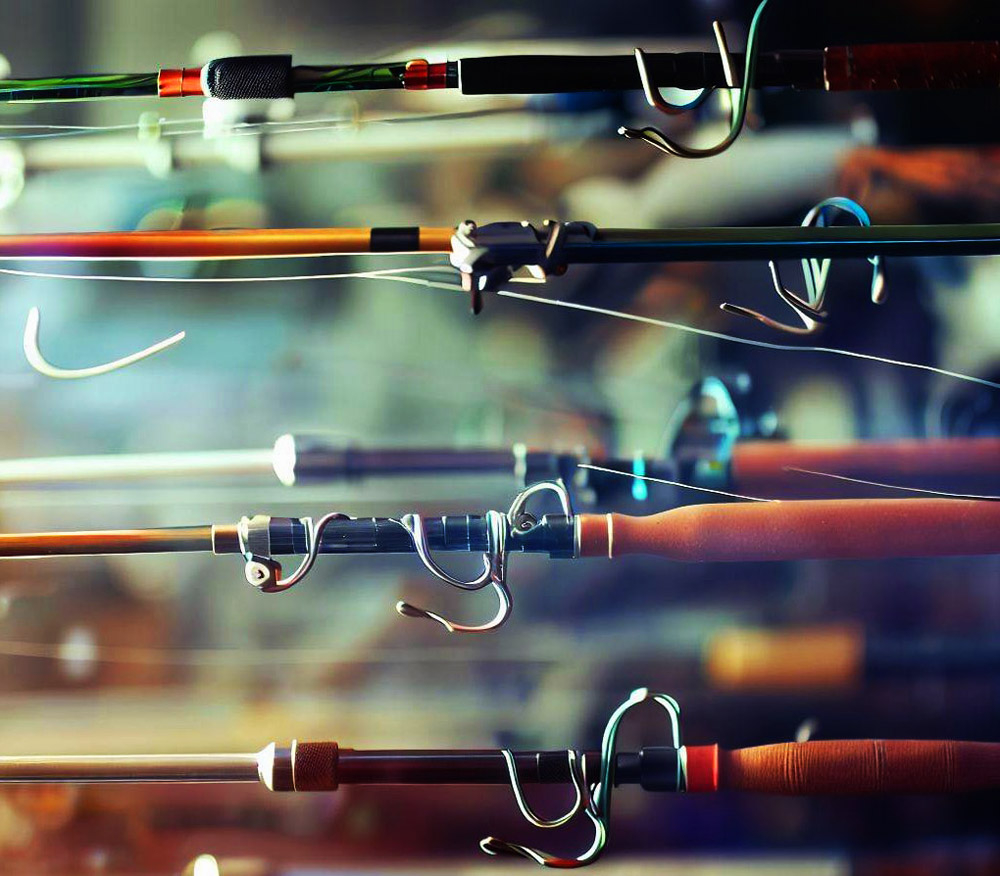
The weight and length of the rod directly affect your casting performance. These are some of the most important parameters to look out for when choosing a rod. And choosing the wrong rod weight or length is unlikely to bring you the efficiency and joy it could have.
Line Weight
Each rod is designed to cast a line with a specific weight. If the line is too light for the rod, it will not have enough force to bend the rod for a powerful cast. Conversely, if the line is too heavy, it will bend the rod too much and may even break it. If you use the correct line weight for which your rod is designed, then you’ll never have problems casting and rod. The weight of the rod is always indicated on the handle.
We’re talking about how to choose the right line weight before buying a rod. How can this be done? The choice of line weight depends on only two factors: the weight of the bait and the weight of the fish. Of course, you rarely know how much weight your caught fish will be. Fortunately, the weight of the fly and the fish is almost always related, and you can guess roughly. Heavier lines will cast heavier baits and catch heavier fish. Lighter lines cast light flies for light fish.
Weight
⭐We’ve divided all weights into groups so that you can understand more clearly what this or that weight is for:
- «0-2». The 0, 1, and 2 ultra-light lines are designed for the fastest and most agile fishing rods. Usually designed for the smallest fish such as trout, panfish, or small perch. The flies used with these lines are usually very small and lightweight. If you have a whole box of size 28 flies, then take a fishing rod with a size 1-2, if your lures are heavier, then it’s better to take a couple of sizes larger.
- «3-4». Lines and rods in weights 3 and 4 are still designed for light lures and fish and are used for light or light-medium flies for trout and panfish.
- «5-7». These are the most common and most versatile weights for trout fishing. 5 rods are currently at their peak of popularity because they can handle 95% of the cases you fish for trout. Weights 6 and 7 are also quite versatile, but they are more often used for casting large streamers and poppers in windy or stormy weather.
- «8-10». For marine species, 8, 9, and 10 are best suited. Sea bass, bonefish, and small or medium tarpon are the fish that rods with this weight do well. Also, these rods are used on rivers too, but mainly when fishing for salmon and steel heads, when there is a need for extra-long casts with a large and heavy fly.
- «11-13 and more». These super heavyweights are designed for big fishing. Weights 11 and 12 are for large tarpon, barracuda, amberjack, and other types of inshore. All sizes larger than 11 and 12 are used for offshore fishing when tuna, marlin, or shark are to be caught.
Length
If the line weight is a fixed parameter based on your target fish and flies size, then the length of the rod depends more on personal preference and skill. Each manufacturer usually produces a rod model in several lengths, such as the aforementioned Maximumcatch Extreme. Most of the 9ft rods on the market because they show the best balance of casting quality and accuracy. If you choose your first rod, then you’ll feel calm and confident with a 9-foot blank.
But there are times when it is more beneficial to take a shorter or longer rod. If you fish in a small mountain river on the slopes with constantly overhanging trees, then the 9-foot rod will constantly cling to the trees and you will be uncomfortable with it. In this case, it is better to take a rod 7-8 feet. But keep in mind that the shorter the rod, the shorter the overgrowth you will be doing.
Some anglers prefer 10-12ft rods when they need to keep the rod as far away from the bends as possible. Most often they are used to perform complex professional fishing techniques, as well as for two-handed casting. But as we said, 9-foot rods are the most versatile and easiest to cast and cast.
Rod Transportation
A 9-foot rod is the most convenient, but then a logical question arises – how to transport it? Tying to the roof of a car or carrying it in your hands, constantly clinging to trees and bushes does not seem very convenient. Therefore, almost all paddle rods are split into 2 or more pieces for easy portability.
Blank connection points (ferrules) allow quick assembly and disassembly of the 9ft rod, converting it into 4 compact pieces. You simply put these items in a case and carry them in your travel bag. 4 piece rods are now more common. You can find rods in two or three pieces, but this is due to their shortness. Six, seven, or eight-piece rods are very popular with anglers who often travel or go fishing to remote locations. But they don’t provide as good casting performance as 4-piece rods.
Reel in the Right Rod: Key Considerations
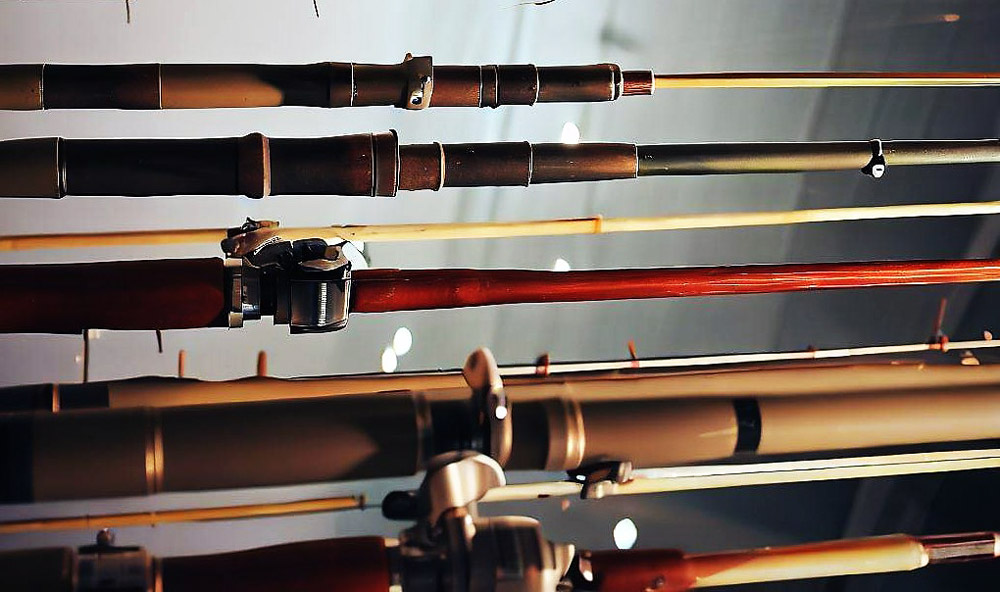
Choosing the right fly rod is not a matter of simply picking the one with the best reviews or the highest price tag. It’s about finding the rod that best suits your individual needs. Here are some crucial factors to consider:
Casting According to Your Skill: Considerations for Beginners and Pros
Your skill level significantly influences the kind of fly rod you should get. If you’re a beginner, you might prefer a medium-action rod, offering a balance between power and flexibility, making it easier to learn the casting basics. As you advance, you may lean towards a fast-action rod, providing more power and accuracy but requiring better timing and technique.
💦Fishing with Purpose: Target Species and Locations
What fish are you targeting, and where will you be fishing? For example, if you’re pursuing small trout in mountain streams, a short, light rod would suffice. But if you’re going after big saltwater species like tarpon, you’ll need a longer, heavier rod that can handle the fight and the corrosive saltwater environment.
💦Personal Preference and Comfort
Every angler has a unique style and preference. Do you like the traditional feel of bamboo, or do you prefer the modern performance of graphite? What type of handle do you find most comfortable? What’s the ideal weight that you can cast all day without feeling tired? Your fly rod should feel like an extension of your arm – comfortable and intuitive to use.
Balancing the Equation: The Importance of Rod Balance, Flexibility, and Strength
⭐Rod balance, flexibility, and strength are essential characteristics that affect casting performance and fish-fighting ability.
- Rod Balance: This is about how the rod feels in your hand when the reel is attached. A well-balanced rod will reduce fatigue and increase casting accuracy.
- Flexibility: This refers to how much the rod bends during casting. A highly flexible (slow-action) rod bends more, making it good for short casts and light lines. A less flexible (fast-action) rod bends less, providing more power for long casts and heavy lines.
- Strength: This relates to how much weight the rod can handle without breaking. The rod’s strength should match the size of the fish you’re targeting.
Getting the Best Bang for Your Buck: Budget and Brand Reputation
While it’s not necessary to spend a fortune to get a good fly rod, quality often comes with a price. Cheaper rods may not perform as well or last as long as you’d like. But expensive doesn’t always mean better, either. It’s about finding the best value within your budget range.
Brand reputation can be a reliable indicator of quality and durability. Established brands usually offer better customer service, including warranties that might come in handy if you break your rod or need spare parts.
🚩Remember, the best fly rod for you is the one that meets your needs, fits your budget, and feels right in your hand. It’s not just about the specs or the brand; it’s about how it enhances your overall fly-fishing experience.
The Angler’s Arsenal: Top Fly Fishing Rods Reviewed
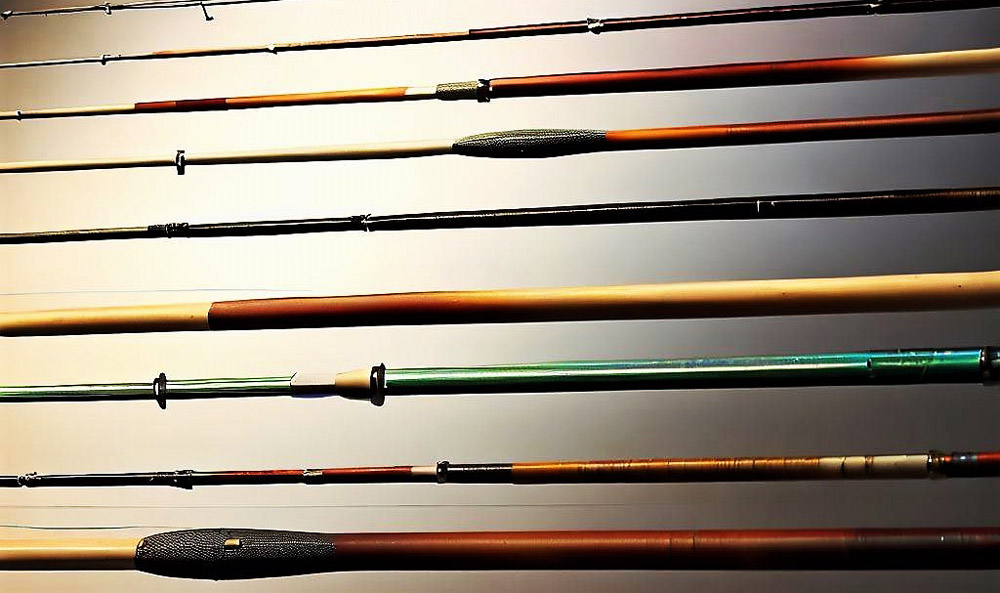
Let’s take a closer look at some of the top-rated fly fishing rods in the market today. We’ll dissect their features, discuss their pros and cons, and identify who they’re best suited for.
Sage X Fly Rod
⭐The Sage X fly rod is a high-performing, fast-action rod made by one of the most respected brands in fly fishing:
- Features: The Sage X rod is built with KonneticHD Technology for improved accuracy and efficiency. It’s made of graphite, which keeps it lightweight and strong. This rod has a black spruce blank color with dark green thread wraps and metallic grey trim wraps, giving it a sleek look.
- Pros: Sage X offers excellent casting accuracy, even at long distances. It’s also known for its strength and ability to handle big fish, making it a good choice for saltwater fishing.
- Cons: This rod comes at a premium price. Also, its fast action may not be suitable for beginners who are still mastering their casting skills.
- Best Suited For: The Sage X rod is perfect for intermediate to advanced anglers who want a high-performing rod for long casting distances and big fish.
Orvis Clearwater Fly Rod
⭐Orvis Clearwater offers a blend of performance and value, making it a popular choice among a wide range of anglers:
- Features: The Orvis Clearwater rod is a medium-action rod, providing a balance between flexibility and power. It features a black chrome blank with white accents, a cork handle, and a chrome snake and stripping guide.
- Pros: Orvis Clearwater provides good casting control, making it a great learning tool for beginners. Despite its affordable price, it doesn’t compromise on quality and durability.
- Cons: While it performs well in a variety of situations, it may not offer the casting distance or power needed for very large fish or very long casts.
- Best Suited For: The Orvis Clearwater rod is ideal for beginners and intermediate anglers who want a good-quality, affordable rod for a variety of fishing situations.
🚩Continue this pattern for each rod review, always focusing on brand and model, features, pros, cons, and who it’s best suited for. This structure provides readers with a comprehensive understanding of each rod, helping them make an informed decision.
Keeping Your Rod Reel Ready: Expert Tips on Fly Fishing Rod Maintenance
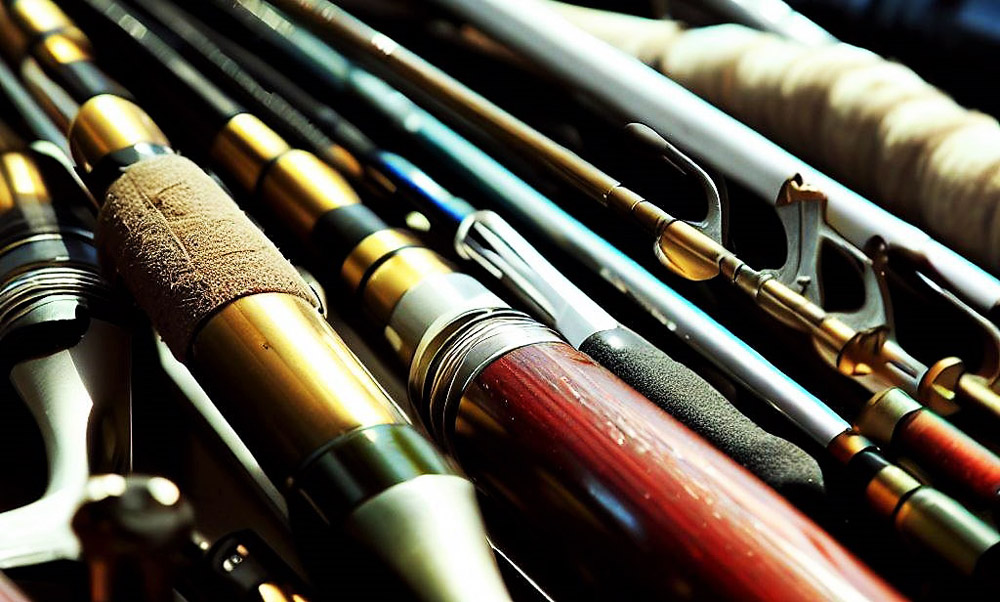
Investing in a quality fly rod is just the first step. The next, and perhaps the most important one, is learning how to maintain it properly. Taking good care of your fly rod not only extends its lifespan but also ensures optimal performance on the water. Here are some expert tips on fly fishing rod maintenance:
Cleanliness is Next to Fishiness: Regular Cleaning and Maintenance
Regular cleaning is the key to a long-lasting fly rod. After each use, clean your rod with warm water and mild dish soap to remove dirt and grime. Use a soft cloth or sponge to gently clean the rod, paying close attention to the handle and the guides.
Once the rod is clean, dry it thoroughly to prevent corrosion, especially if you’ve been fishing in saltwater. Also, check the rod for any damage, like cracks or chips, and repair them as soon as possible to prevent further deterioration.
Store More, Worry Less: Proper Storage of Your Fly Rod
Proper storage of your fly rod when not in use can significantly extend its lifespan. Always store your rod in a cool, dry place to prevent warping and discoloration. If possible, keep it in a rod tube with a rod sock for extra protection.
Avoid storing your rod while it’s still wet, as this can lead to mold growth and material degradation. And remember to remove the reel before storage to avoid unnecessary strain on the rod.
Dealing with Damage: Common Issues and Repairs
Even with the best care, your fly rod may occasionally suffer damage. Some common issues include broken tips, cracked blanks, and damaged guides.
If you break your rod’s tip, you can often get a replacement from the manufacturer, or you might be able to fix it with a tip repair kit. For a cracked blank, it’s usually best to contact the manufacturer as this can be a complex repair. And if a guide becomes damaged, it can often be replaced with a bit of epoxy and thread wrapping.
To avoid damage, handle your rod with care. Don’t use it to pull your fly from a tree or to prod anything in the water. And be careful when assembling and disassembling your rod to prevent unnecessary stress on the joints.
🚩Remember, a well-maintained fly rod not only lasts longer but also performs better. So, take the time to clean, store, and repair your rod, and it will serve you well for many fishing adventures to come.
FAQ: Must-Have Fly Fishing Rods for Every Fisherman
We have collected for you the most frequent questions that arrive in our mail, so now we will give you a complete understanding of fly rods if you still have any questions.
Final Verdict: A Good Angler Never Blames His Rod
Fly fishing is an art, a sport that engages the angler with nature in an intimate dance. As we’ve seen throughout this guide, one of the critical players in this dance is your fly fishing rod. We’ve explored the world of fly rods, understanding their structure and the different types available, whether freshwater, saltwater, spey, or switch rods.
We took a deep dive into the key considerations when buying a fly rod – from skill level and target species to personal preferences and budget. We learned that balance, flexibility, and strength play significant roles in the rod’s performance, and a good reputation is often an indicator of quality and durability.
We also reviewed some of the top-rated fly rods in the market, shedding light on their features, pros, cons, and who they’re best suited for. Yet, our journey doesn’t end when you’ve chosen your rod. We’ve highlighted the importance of regular maintenance, proper storage, and timely repairs to ensure your chosen rod lasts as long as possible and performs at its best.
Choosing the right fly fishing rod is not a decision to be rushed. It’s an investment in your fishing experience. We encourage you to take your time, do your research, and consider your needs and preferences.
We hope this guide has given you valuable insights and helps you make an informed decision. But remember, the conversation doesn’t end here. We invite you to share your experiences, ask any questions, or even suggest your favorite fly fishing rods. After all, the best way to learn is by sharing and hearing from the experiences of others.
Join the Fly Fishing Conversation
Now that we’ve shared our insights, we’d love to hear from you. Whether you’re a seasoned angler or just starting your fly fishing journey, each of us has unique experiences and perspectives that can enrich our shared knowledge.
Do you have a favorite fly rod that wasn’t mentioned in our list? What unique experiences have you had with different rods? Or maybe you have a question about something we’ve discussed in the article? Leave a comment below, and let’s continue the conversation. Your insights and queries not only help you but can also help fellow readers make their fly rod selection more effective.
If you found this article valuable, consider subscribing or following us for more. We continually strive to provide useful tips, expert advice, and comprehensive product reviews to guide you through the exciting world of fly fishing. Your support helps us continue our mission to help anglers like you get the most out of their fishing experience.
🚩So, join our community today, and let’s embark on this fly-fishing adventure together. Cast your thoughts in the comment section below and stay tuned for more engaging content.

I live in Tenerife (Canary Islands) for the last 10+ years and share my daily fishing experiences on my website. Many years of personal experience as a fisherman and the vast experience of my friends allow me to write professionally on any fishing topics (from choosing a flashlight and equipment to deep-sea fishing).
All of my advice is based on practical real-world experience and will be useful to both novice anglers and professionals. Read more about the author.
Affiliate Disclosure: FishReeler.org sometimes gets paid for listings, through sponsors or affiliate programs like Amazon, Ebay, Cabelas, Bass Pro Shop, Shimano, Daiwa, Rapala, Renn, Okuma, KastKing, etс. Clicking a link helps keep FishReeler.org free, at no extra cost to you!
About the author: Each article is verified by the fishing expert Sergio Smirnoff. The articles are written by professional and amateur fishermen with 20+ years of fishing experience.
Note: The views and opinions expressed in this article are those of the authors and do not necessarily reflect the official policy or position of any agency. The articles are for informational purposes only, share your opinions in the comments and join the fishing discussions, let's share our fishing experiences together!

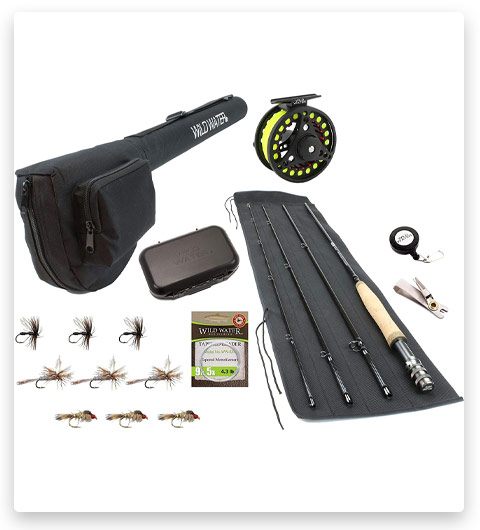
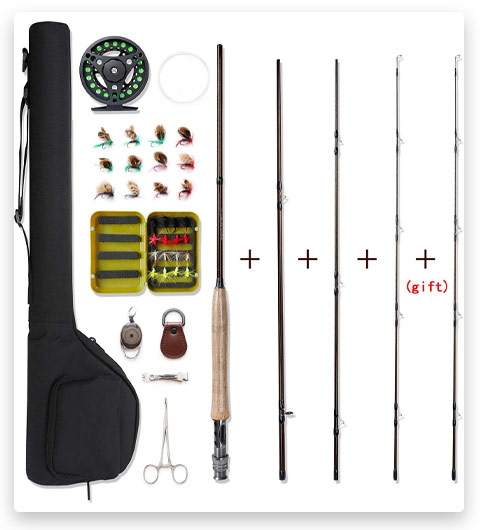
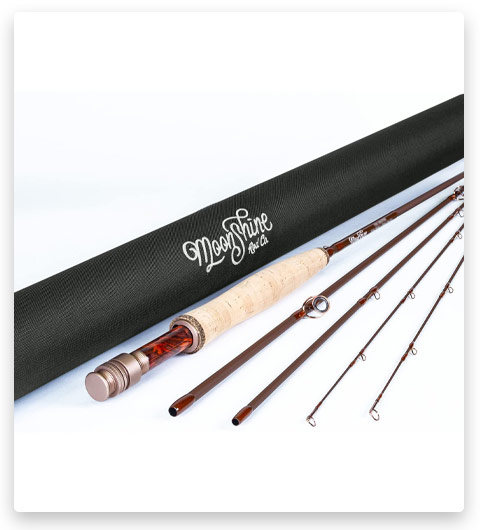
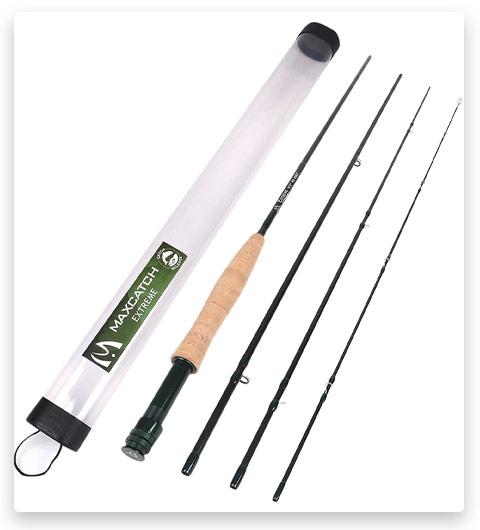
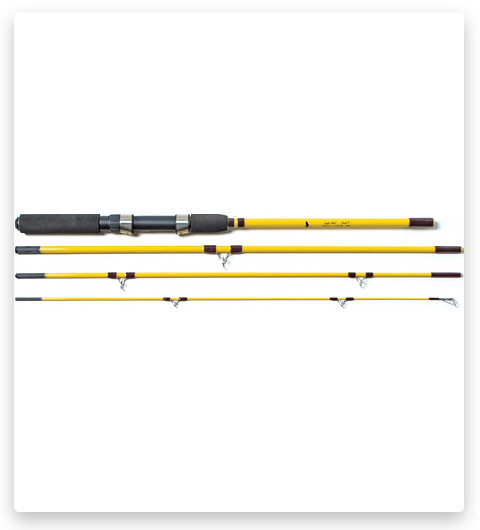
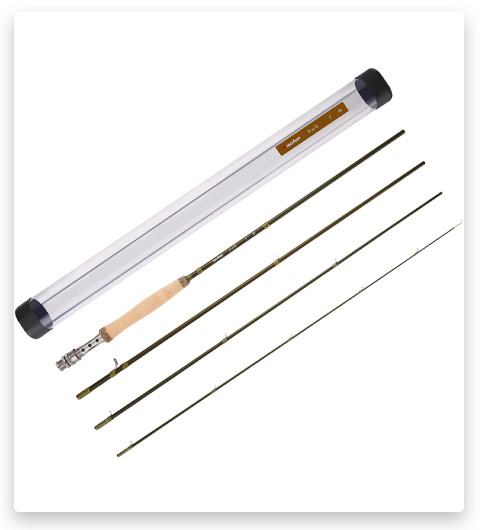
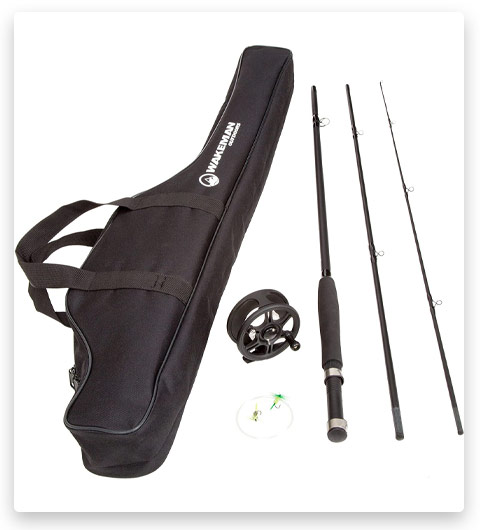
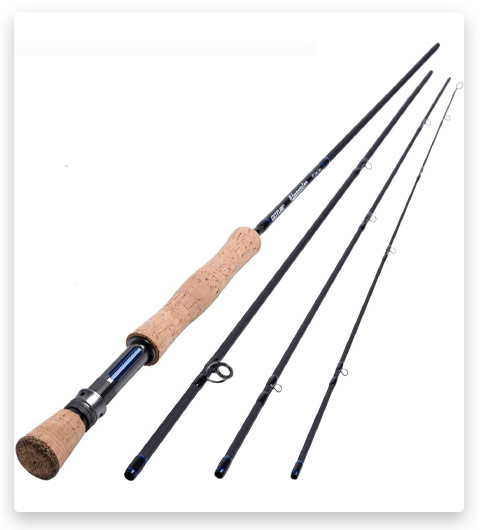
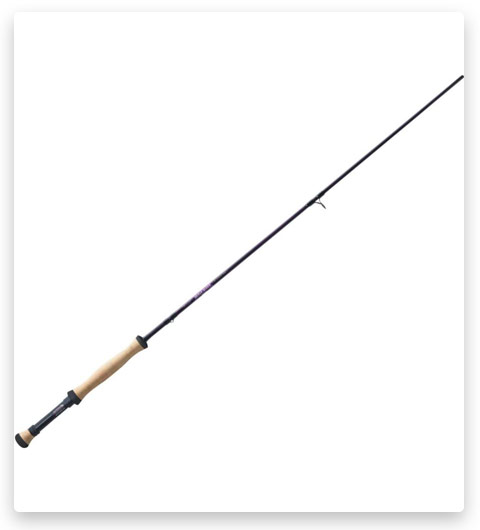
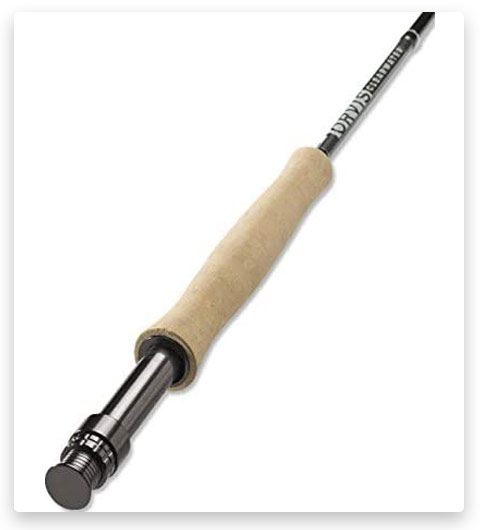
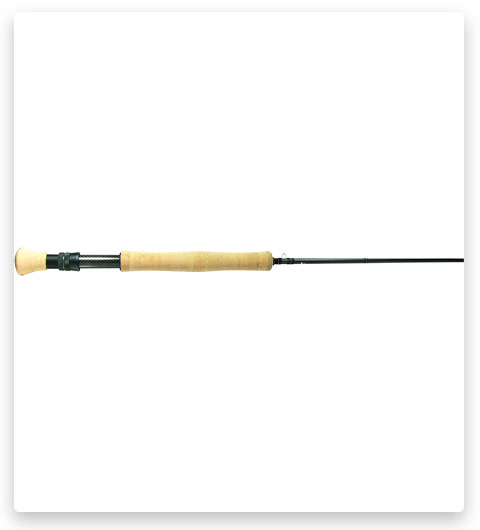
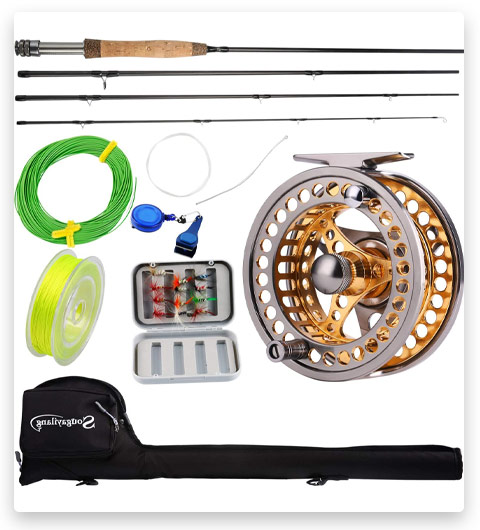
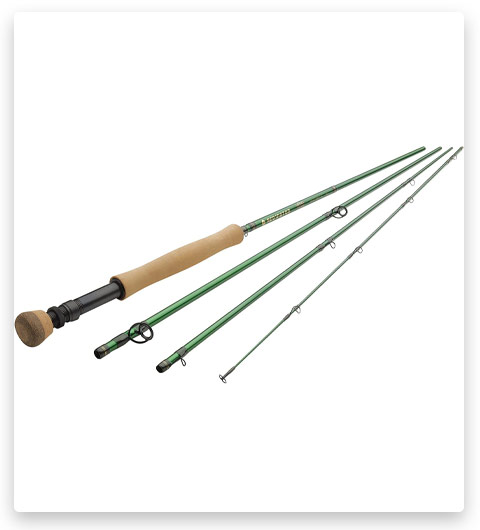
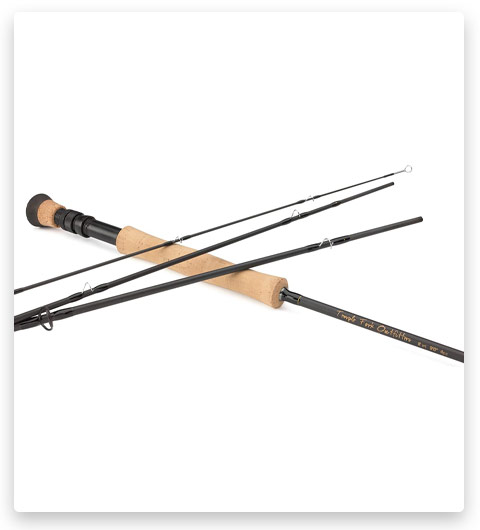
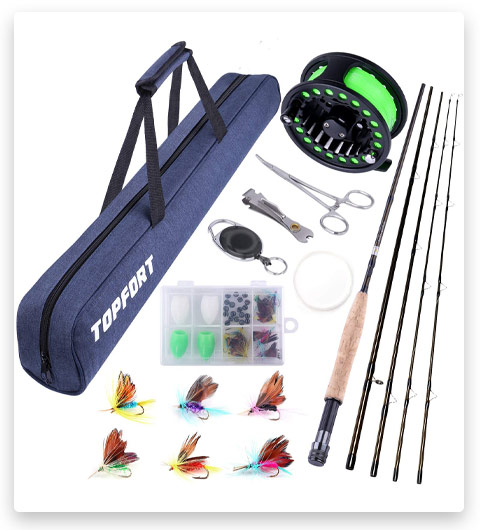
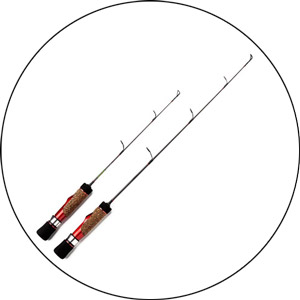
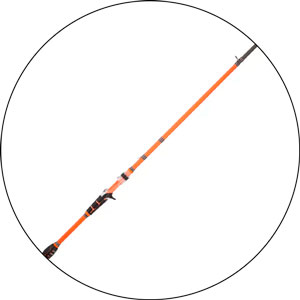
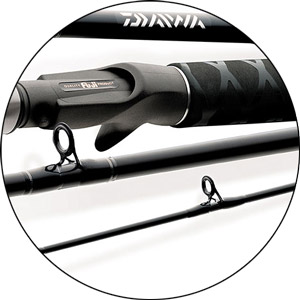


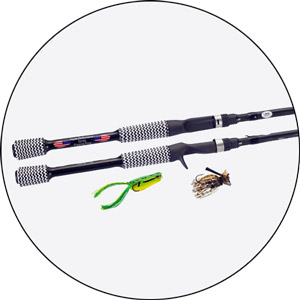
This is a comprehensive and insightful guide. As someone relatively new to fly fishing, the advice given on rod selection is invaluable. It’s exciting to see the top 15 rods and find the one that best fits my fishing style and needs. This is a bookmark-worthy article for any angler!
As an experienced angler, I’ve seen firsthand how the right rod can turn a good fishing trip into a great one. This article does a fantastic job explaining the ins and outs of fly fishing rods. I look forward to seeing what rods have made the list and how they compare to my current setup.
The attention to detail in this article is quite impressive. As a beginner, the whole concept of choosing the right fly rod is somewhat intimidating. The thorough breakdown of all the factors to consider is incredibly helpful. Looking forward to delving deeper into the world of fly fishing!
Fantastic read! It’s refreshing to see an article that not only informs but also immerses you into the fly fishing world. As a seasoned fisherman, I can’t stress enough the importance of a good rod. Eager to see if my current favorites made the top 15 list.
Wonderful article! The writer captured the soul of fly fishing while providing practical, actionable advice. I appreciate the clear breakdown of different rods and their features. It’s got me excited to upgrade my gear and get back out on the water.
Love how this piece is both educational and evocative. It’s easy to feel the writer’s passion for fly fishing, which inspires me to invest more time in choosing the right rod. Can’t wait to see the top picks and learn more about the best gear available today.
This article absolutely hits the nail on the head. The way it captures the essence of fly fishing takes me back to the many mornings I’ve spent on the river. Having the right rod truly makes a difference in the whole experience. Can’t wait to read about the top picks and maybe find my next fishing companion!